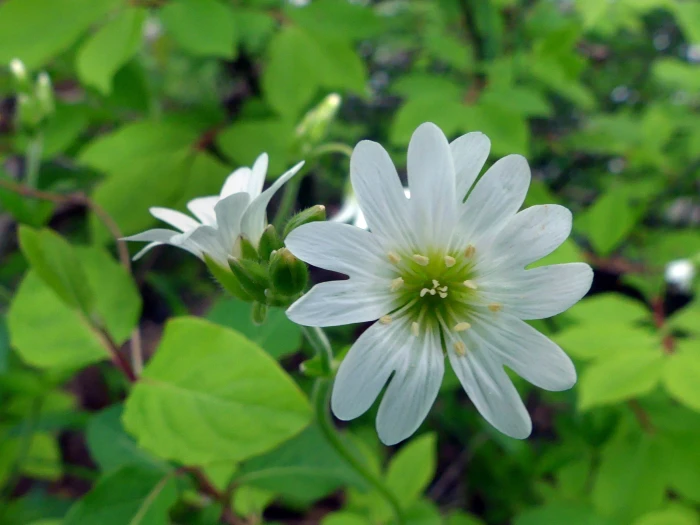Field Mouse-Ear
(Cerastium arvense)
Field Mouse-Ear (Cerastium arvense)
/
/

Allen Browne
Public Domain
Image By:
Allen Browne
Recorded By:
Copyright:
Public Domain
Copyright Notice:
Photo by: Allen Browne | License Type: Public Domain | License URL: http://creativecommons.org/publicdomain/zero/1.0/ | Rights Holder: Allen Browne | Publisher: iNaturalist | Date Created: 2021-04-16T14:27:44-07:00 |





















Estimated Native Range
Climate Requirements for Moses Lake, Washington
| This Plant | Your Site | Plant Suitability for Your Location | ||
|---|---|---|---|---|
| • Precipitation | 2" - 196" | 7" | Your precipitation may be insufficient for this plant. Irrigate N" / year. | Irrigate N" / year |
| • High Temp. | 33°F - 99°F | 87°F | Your summer temperatures are normal for this plant. | Excellent |
| • Low Temp. | -53°F - 73°F | 22°F | Your winter temperatures are normal for this plant | Excellent |
This plant should grow well at your location with about N inches per year (Y minutes per month) of irrigation.
Summary
Cerastium arvense, commonly known as field mouse-ear or field chickweed, is a perennial herb that is part of the Caryophyllaceae family. It is native to temperate regions of Eurasia, North and South America. This plant typically grows up to 12-18 inches tall and can form dense mats, making it an effective ground cover. It has a clumping habit and can also spread as a creeper, with stems that are sometimes upright. Field mouse-ear has linear to lance-shaped or oblong leaves and is known for its showy white flowers, which bloom from late spring to early summer. Each flower features five two-lobed petals, creating a distinctive fringed appearance. The fruit is a cylindrical capsule that opens at the top to release small brown seeds.
Field mouse-ear is valued for its low maintenance and ability to thrive in poor soils, making it a suitable choice for rock gardens, alpine gardens, and as ground cover in sunny to partly shaded areas. It is drought-tolerant once established and prefers well-drained soils. While it can be an attractive addition to the garden, it is important to manage its spread to prevent it from becoming invasive. In some regions, it is considered a weed due to its aggressive growth habits.CC BY-SA 4.0
Field mouse-ear is valued for its low maintenance and ability to thrive in poor soils, making it a suitable choice for rock gardens, alpine gardens, and as ground cover in sunny to partly shaded areas. It is drought-tolerant once established and prefers well-drained soils. While it can be an attractive addition to the garden, it is important to manage its spread to prevent it from becoming invasive. In some regions, it is considered a weed due to its aggressive growth habits.CC BY-SA 4.0
Plant Description
- Plant Type: Herb
- Height: 0.25-0.5 feet
- Width: 1-3 feet
- Growth Rate: Moderate
- Flower Color: White
- Flowering Season: Spring, Summer
- Leaf Retention: Semi-deciduous
Growth Requirements
- Sun: Full Sun
- Water: Medium
- Drainage: Medium
Common Uses
Bee Garden, Border Plant, Low Maintenance
Natural Habitat
native to temperate regions of Eurasia, North and South America
Other Names
Common Names: Field Mouse-ear Chickweed, Field Mouse-Ear, Meadow Chickweed, Prairie Mouse-Ear Chickweed, Starry Chickweed, Starry Grasswort
Scientific Names: Cerastium arvense, Arenaria aizoides, Cerastium arvense f. arvense, Cerastium arvense var. fueguianum, Cerastium arvense var. viscidulum, Cerastium busamburense, Cerastium fueguianum, Cerastium montanum, Cerastium nervosum
GBIF Accepted Name: Cerastium arvense